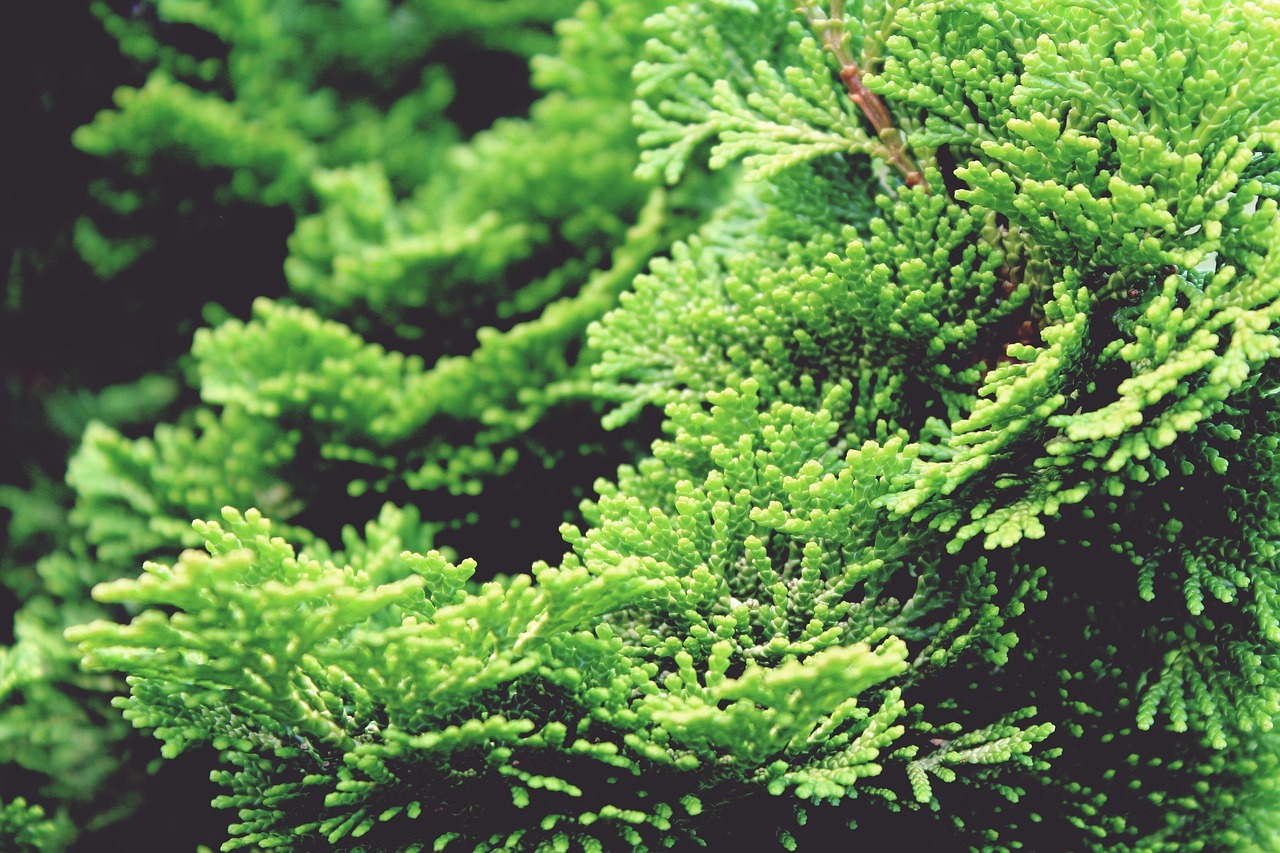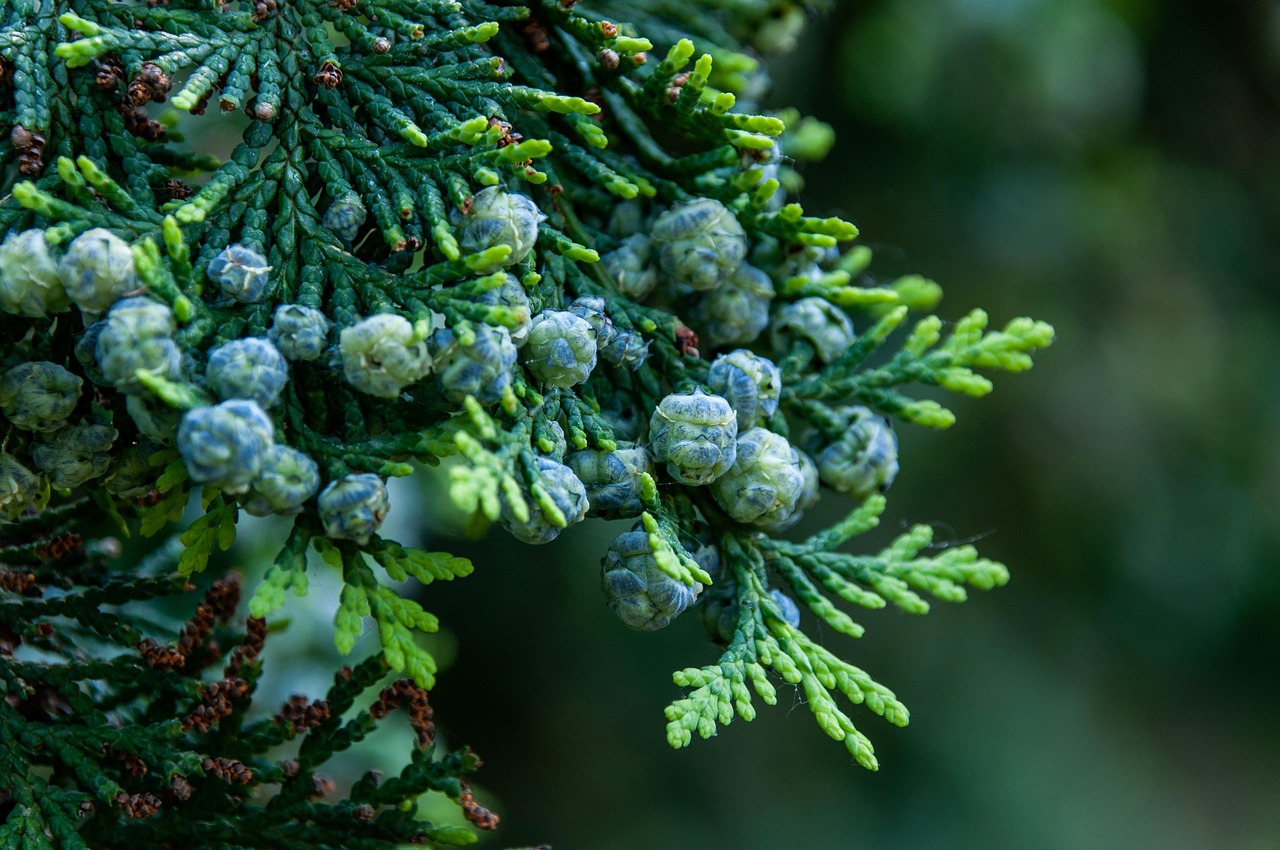Italian Cypress trees grow approximately 12 to 24 inches annually, reaching heights up to 60 feet. They are ideal for formal gardens due to their slender, upright shape, drought tolerance, and long lifespan. Proper care, soil, sunlight, and environmental conditions are essential for optimal growth and landscape impact.
The Italian Cypress is known for its elegant, column-like shape and rich green foliage. It is a popular choice in landscaping, especially in Mediterranean and formal garden designs. With its ability to reach heights of up to 60 feet, the Italian Cypress can provide a dramatic vertical accent in any garden setting. Its dense growth habit also offers privacy when planted in rows or as a standalone specimen.

One of the primary factors influencing the growth rate of the Italian Cypress is its environment. These trees thrive in well-drained soil and full sun. They are drought-tolerant once established, making them suitable for various climates. However, they do prefer areas with warm temperatures, which contribute to their robust growth.
Factors Affecting Growth Rate
Several factors can influence the growth rate of the Italian Cypress tree. Understanding these elements can help gardeners achieve optimal growth and landscaping results.
- Soil Quality: The tree prefers sandy or loamy soils that drain well. Heavy clay soils can hinder growth.
- Watering: While established trees are drought-resistant, young trees need regular watering to promote initial growth.
- Sunlight: Full sun exposure is crucial for healthy growth. Italian Cypresses require at least 6 hours of direct sunlight each day.
- Temperature: These trees flourish in warmer climates. They are best suited for USDA hardiness zones 8 to 10.
- Pests and Diseases: Regular monitoring for pests like aphids and diseases such as root rot can help maintain growth rates.
The Italian Cypress tree can also tolerate some environmental stress, but extreme conditions may slow down its growth. Ensuring the right care and conditions will lead to faster establishment and overall height gain.

Growth Characteristics
The Italian Cypress has distinctive characteristics that make it suitable for formal gardens. Its narrow, upright form allows it to fit into tight spaces while still providing visual interest. The tree maintains its shape even without frequent pruning, making it low maintenance compared to other types of trees.
In addition to its aesthetic appeal, the Italian Cypress has several practical benefits:
| Characteristic | Details |
|---|---|
| Height | Up to 60 feet |
| Width | 3 to 5 feet |
| Lifespan | Over 100 years |
| Growth Rate | 12 to 24 inches per year |
The long lifespan of the Italian Cypress adds value to gardens. With proper care, these trees can live for a century or more, becoming a lasting fixture in any landscape design.

Planting Italian Cypress trees in formal gardens can create a striking visual effect. Their vertical lines guide the eye upward, enhancing the overall structure of the garden. When planted in rows, they can serve as natural privacy screens or windbreaks.
For best results, spacing should be considered when planting. Trees should be spaced adequately to allow light penetration and air circulation. A common recommendation is to plant them 5 to 10 feet apart, depending on the intended density and landscape design.
The growth rate of the Italian Cypress is also influenced by seasonal changes. In spring and summer, the tree experiences its most vigorous growth due to warmer temperatures and increased sunlight. In contrast, growth slows down during the colder months as the tree enters dormancy.
In summary, understanding the growth rate and characteristics of the Italian Cypress can help gardeners make informed decisions about incorporating this stunning tree into their formal gardens.

Ideal Growing Conditions for Italian Cypress
To achieve optimal growth rates for the Italian Cypress, it is essential to provide the right growing conditions. Understanding these conditions can significantly enhance both the health and appearance of the tree in formal gardens.
Soil Requirements
The Italian Cypress prefers well-drained soil that is rich in nutrients. Here are key soil characteristics to consider:
- Drainage: Good drainage is crucial. Waterlogged soil can lead to root rot, which severely affects growth.
- Soil pH: The ideal pH range is between 6.0 and 7.5. You can test your soil’s pH using a simple home test kit.
- Nutrient Content: Enriching the soil with organic matter, like compost, can improve nutrient availability and promote healthy growth.
Watering Practices
Proper watering practices are vital for the health of the Italian Cypress, especially during its formative years. Below are some tips to ensure effective watering:
- Frequency: Water young trees deeply once a week during dry spells. Once established, they require less frequent watering.
- Avoid Overwatering: It is essential to avoid soggy conditions. Allow the top inch of soil to dry out between watering sessions.
- Mulching: Applying mulch around the base of the tree can help retain moisture and regulate soil temperature.
Pest and Disease Management
The Italian Cypress tree is relatively resilient but can be susceptible to certain pests and diseases. Early detection and management are key to maintaining its health.
Common Pests
Some of the most common pests affecting the Italian Cypress include:
- Aphids: These small insects feed on the sap of the tree, causing leaves to curl and yellow.
- Cypress Bark Beetles: These beetles bore into the bark, potentially leading to branch dieback.
- Spider Mites: These tiny arachnids can cause leaf discoloration and webbing on the foliage.
Disease Issues
Several diseases can affect the Italian Cypress, including:
- Root Rot: Caused by overwatering or poor drainage, root rot can quickly kill the tree if not managed.
- Cypress Canker: This fungal disease leads to dieback of branches and can be identified by oozing sap.
- Leaf Blight: This issue can result in browning and dropping of foliage, often exacerbated by high humidity.
Regular monitoring for these issues can help catch problems early. If pests or diseases are detected, appropriate treatments such as insecticidal soap or fungicides may be needed.
Pruning Techniques for Optimal Growth
Pruning is an important practice for maintaining the health and aesthetic value of Italian Cypress trees. Proper pruning techniques can encourage healthy growth and enhance their formal appearance.
When to Prune
The best time to prune Italian Cypress trees is during late winter or early spring before new growth begins. This timing allows for minimal stress on the tree.
Pruning Techniques
Here are some useful pruning techniques to consider:
- Remove Dead or Diseased Wood: Regularly inspect the tree for any dead or diseased branches and remove them promptly to promote overall health.
- Shape the Tree: Lightly trim the sides to maintain a tidy appearance without drastically altering its natural form.
- Avoid Heavy Pruning: Avoid cutting back more than one-third of the foliage at a time, as this can stress the tree.
By following these pruning techniques, gardeners can maintain the Italian Cypress’s elegant form while encouraging healthy growth rates.
Landscape Design Ideas
The Italian Cypress can be effectively incorporated into various landscape designs. Its tall, slender profile works well in many settings. Here are some design ideas:
- Formal Hedges: Planting Italian Cypresses in a row creates a classic hedge that can define garden spaces.
- Sculptural Focal Points: Use individual trees as focal points in garden beds or entryways.
- Container Planting: Smaller specimens can thrive in large containers on patios or terraces for a Mediterranean vibe.
The versatility of the Italian Cypress makes it an excellent choice for enhancing the beauty of formal gardens while providing structure and height.
Ecological Considerations When Planting Italian Cypress
When incorporating Italian Cypress trees into formal gardens, it is essential to consider their ecological impact. Understanding how these trees interact with their environment can lead to better gardening decisions and promote biodiversity.
Nesting and Wildlife Habitat
Italian Cypress trees can provide shelter for various wildlife, particularly birds. Their dense foliage serves as a nesting site and protection from predators. Here are some key points regarding their role in wildlife habitat:
- Birds: Many species of birds, such as sparrows and finches, find refuge in the branches of Italian Cypress trees. They may also use them for nesting.
- Insects: The trees attract beneficial insects, which can aid in pollination and pest control within the garden.
- Small Mammals: The base of the tree can provide cover for small mammals, contributing to the local ecosystem.
Water Usage and Conservation
Italian Cypress trees are known for their drought tolerance, which can contribute to water conservation efforts in landscaping. Here are some considerations regarding their water usage:
- Drought Resistance: Once established, they require minimal watering, making them suitable for dry regions.
- Soil Moisture Retention: Their deep root systems help improve soil structure, potentially increasing moisture retention in the surrounding area.
- Mulching Benefits: Applying mulch around the base can further conserve moisture and reduce the need for frequent watering.
Cultural Significance of Italian Cypress
The Italian Cypress has considerable cultural significance, especially in Mediterranean nations. It is often associated with various historical and symbolic meanings.
Symbolism and History
The Italian Cypress is often viewed as a symbol of immortality and mourning. Here are some aspects of its cultural importance:
- Mourning Symbol: Historically, the tree has been planted in cemeteries due to its association with eternal life and remembrance.
- Cultural Heritage: In Italy, these trees are often found in classical gardens and landscapes, reflecting a rich cultural heritage.
- Artistic Inspiration: The elegant form of the Italian Cypress has inspired countless artists and poets throughout history.
Use in Traditional Landscapes
The Italian Cypress is frequently used in traditional landscape designs, particularly in Mediterranean gardens. Its aesthetic appeal enhances various architectural styles:
- Mediterranean Gardens: The tree’s tall, slender profile complements the low-to-the-ground flora typical of Mediterranean designs.
- Formal Gardens: Its vertical lines help create symmetry and balance in structured landscape layouts.
- Urban Landscaping: Italian Cypresses can be utilized in urban settings to soften hardscapes and add greenery.
Planting Techniques for Success
Successful planting of Italian Cypress trees involves several key techniques that promote healthy growth and establishment.
Selecting the Right Location
Choosing the right location is crucial for the long-term health of Italian Cypress trees. Consider the following factors:
- Sun Exposure: Select a site that receives full sun for most of the day, as partial shade can hinder growth.
- Spacing: Ensure adequate space between trees to allow air circulation and prevent overcrowding.
- Soil Quality: Test the soil before planting to confirm it meets the ideal conditions discussed earlier.
Planting Process
The planting process should be carefully executed to ensure the tree’s success:
- Digging the Hole: Dig a hole that is twice as wide as the root ball but no deeper than the root ball itself.
- Amending Soil: Mix compost with native soil to enhance nutrient content before backfilling.
- Watering Immediately: Water the tree thoroughly after planting to settle the soil around the roots.
- Mulching: Apply a layer of mulch around the base to retain moisture and suppress weeds.
By following these techniques, gardeners can establish healthy Italian Cypress trees that thrive in their formal garden settings.
Caring for Young Trees
The first few years after planting are critical for the growth of Italian Cypress trees. Proper care during this stage will set the foundation for a healthy tree.
Nurturing Young Trees
Caring for young Italian Cypress trees includes regular monitoring and maintenance. Here are some essential practices:
- Consistent Watering: Ensure young trees receive consistent moisture during their first growing season. Watering deeply encourages deep root development.
- Pest Inspection: Regularly check for pests or signs of disease, as young trees may be more vulnerable.
- Avoid Fertilization Too Soon: Avoid fertilizing until the tree is established; excessive nutrients can harm young plants.
Caring for young Italian Cypress trees will ensure that they grow strong and healthy, leading to successful integration into formal gardens.
Challenges and Considerations in Growing Italian Cypress
While Italian Cypress trees are generally hardy and adaptable, there are several challenges that gardeners may face. Understanding these potential issues can help in developing effective strategies for successful cultivation.
Environmental Stressors
Italian Cypress trees can experience stress from various environmental factors. Here are some common stressors to monitor:
- Temperature Extremes: While they thrive in warm climates, sudden temperature fluctuations can affect young trees. Protect them during unexpected cold snaps.
- Wind Exposure: Strong winds can cause damage to the tree’s branches. Planting them in sheltered locations can mitigate this risk.
- Soil Compaction: Heavy foot traffic or poor soil management can lead to compaction, restricting root growth and water absorption.
Maintenance Challenges
Regular maintenance is crucial for the health of Italian Cypress trees. Here are some challenges you may encounter:
- Weed Competition: Weeds can compete for nutrients and water. Regularly removing weeds around the base of the tree is essential for healthy growth.
- Pest Management: As mentioned earlier, pests can pose a threat. Implementing an integrated pest management (IPM) approach can help control infestations.
- Disease Prevention: Keeping the area around the tree clean and improving air circulation can prevent diseases like root rot and cankers.
Enhancing Growth with Companion Planting
Companion planting can be a beneficial strategy when growing Italian Cypress trees. Selecting the right plants to grow alongside them can enhance growth and overall garden health.
Compatible Companion Plants
Some plants work well with Italian Cypress trees, offering aesthetic appeal while providing ecological benefits. Here are some options:
- Lavender: This drought-tolerant herb complements the aesthetic of the cypress and attracts beneficial pollinators.
- Rosemary: Like lavender, rosemary thrives in similar conditions and adds aromatic foliage to the garden.
- Succulents: Drought-resistant succulents can be planted at the base of the cypress, minimizing water competition while providing visual contrast.
Avoiding Incompatible Plants
Certain plants may hinder the growth of Italian Cypress trees. Avoid planting species that require excessive moisture or compete heavily for nutrients. Some examples include:
- Heavy Feeders: Plants like corn or tomatoes may deplete the soil of nutrients needed by the cypress.
- Moisture-Loving Plants: Avoid planting near species that require wet soil, as this can increase the risk of root rot.
Final Thoughts
The Italian Cypress tree is a remarkable addition to formal gardens, offering both beauty and functionality. With its impressive growth rate and elegant form, it serves as an excellent vertical accent in landscape design. By understanding its growth requirements, maintenance needs, and potential challenges, gardeners can create thriving environments for these trees.
The information in this article highlights the importance of proper care, including soil preparation, watering practices, pest management, and companion planting strategies. Additionally, recognizing the ecological significance of Italian Cypress trees adds depth to their cultivation, allowing gardeners to appreciate their role in local ecosystems.
Incorporating Italian Cypress into garden designs not only enhances visual appeal but also contributes to biodiversity and environmental health. With thoughtful planning and care, these trees can flourish in a variety of settings, providing enjoyment for generations to come.
By following the guidelines discussed throughout this article, gardeners can ensure that their Italian Cypress trees grow strong and healthy, becoming a magnificent feature of their formal gardens.
